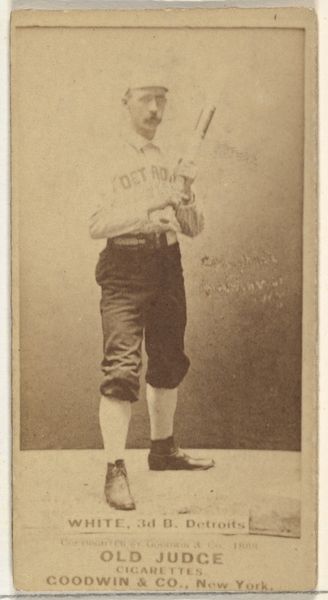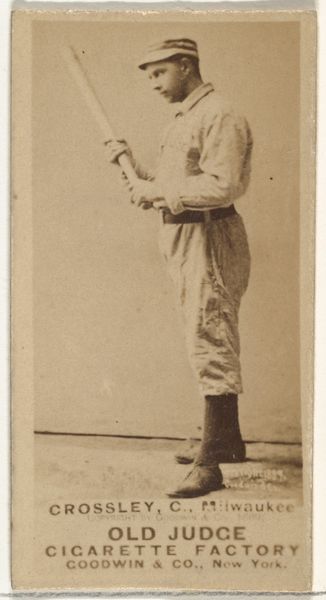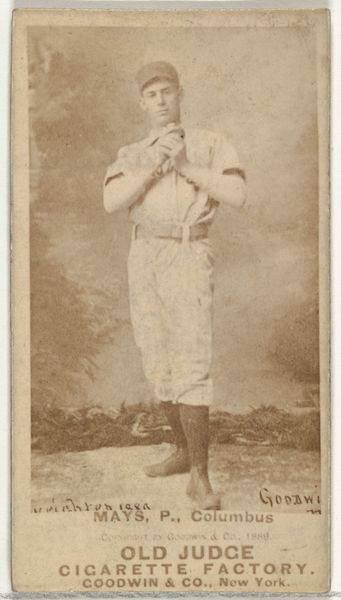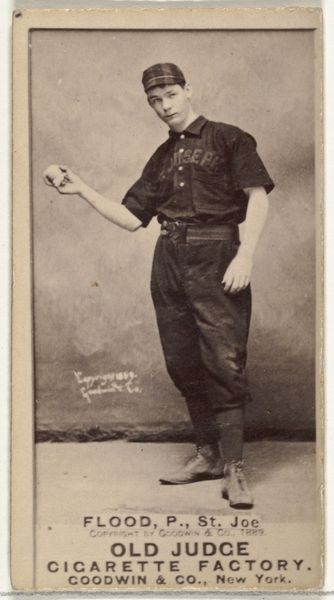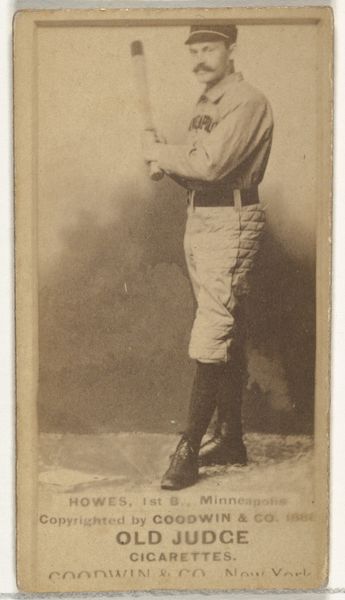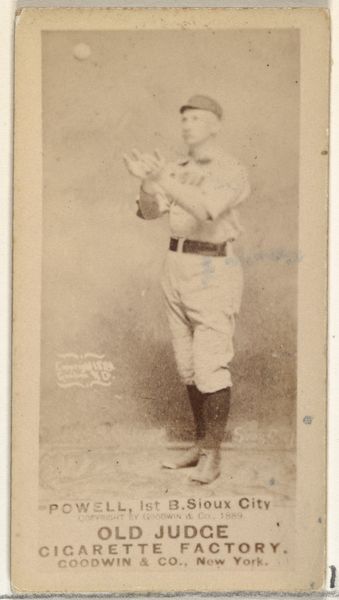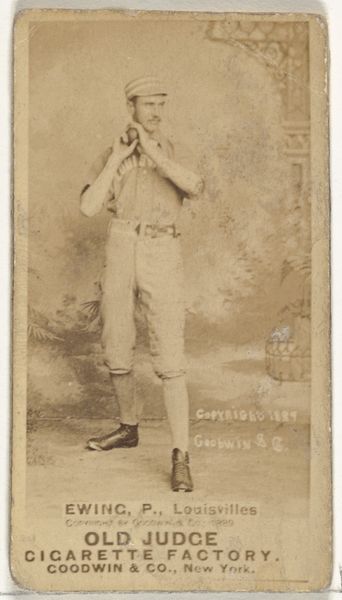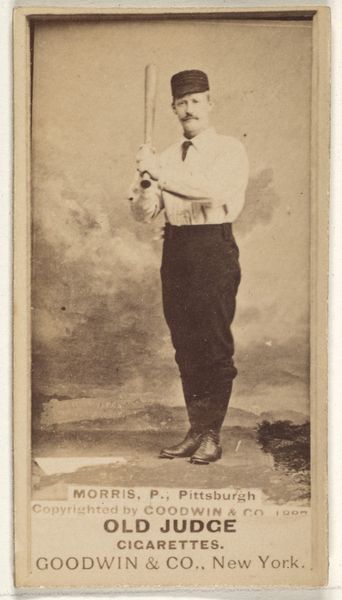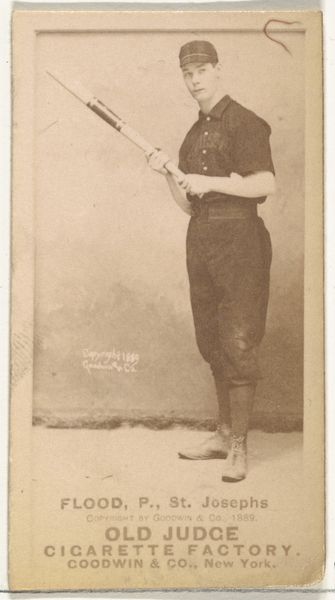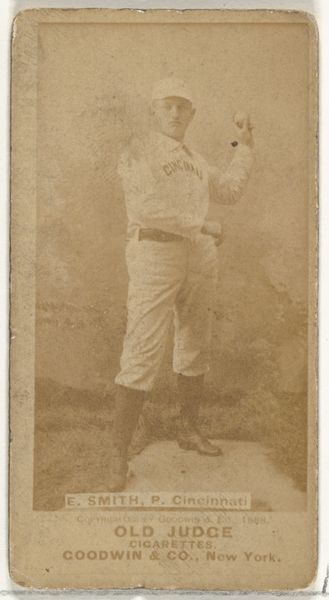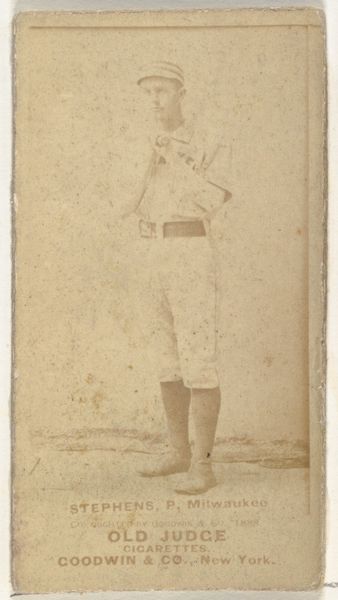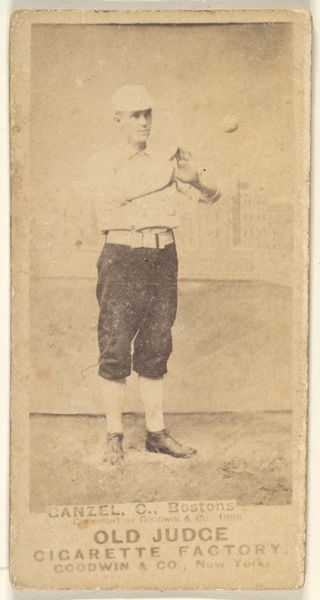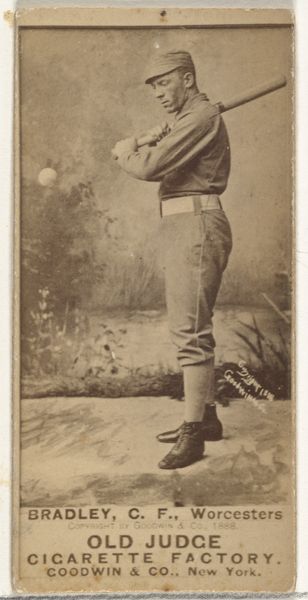
John Ewing, Pitcher, Louisville Colonels, from the Old Judge series (N172) for Old Judge Cigarettes 1889
0:00
0:00
drawing, print, photography
#
portrait
#
drawing
# print
#
photography
#
genre-painting
Dimensions: sheet: 2 11/16 x 1 3/8 in. (6.9 x 3.5 cm)
Copyright: Public Domain
Editor: Here we have an 1889 baseball card, titled "John Ewing, Pitcher, Louisville Colonels," from the Old Judge series. It’s a photographic print, seemingly meant to resemble a formal portrait, yet functions as advertisement for cigarettes. It strikes me as a study of contrasts, sport and consumerism of that time. How do you interpret this work within its historical moment? Curator: Exactly, it's a fascinating collision of worlds! I see it as a crucial piece of visual culture, reflective of late 19th-century America. On one level, it's about the rise of baseball as a popular spectacle and the birth of celebrity culture, particularly focused on idealized masculine figure. Yet, what does it tell us that this rising fame is directly linked to, essentially, a marketing campaign for a harmful product like cigarettes? Who are the intended consumers? Editor: It feels… exploitative. The athletes endorse something potentially detrimental for their own visibility. Curator: Precisely! And notice how Ewing is posed against a seemingly ‘neutral’ background, which still serves to idealize his form. Consider how the rise of industrial capitalism created both leisure time for sport and a surge in mass-produced consumer goods, cigarettes being just one example. Doesn't this card become a lens through which we can understand the changing landscape of work, leisure, and social control? Also, note the company's name—do you observe anything peculiar about it, vis-à-vis the social attitudes in 1889? Editor: Goodwin and Co. seems like a common corporation name of that time, so, no. What's the thing I am missing? Curator: Let’s consider how the company benefits both economically and socially from the figure of Ewing, the athlete—essentially what becomes normalized due to how frequently it appeared as product advertisement and consumption practices. Consider that against those who faced more scrutiny and criticism. It helps reveal not only what Goodwin & Co benefits from in society, but who benefits and who does not. Editor: That makes me see it differently. It reflects not only consumerism and early sports culture but a system of values. Curator: Indeed. This card offers us a glimpse into the intertwined relationship between industry, athleticism, and the subtle yet powerful ways consumer culture shapes social norms and power dynamics.
Comments
No comments
Be the first to comment and join the conversation on the ultimate creative platform.
